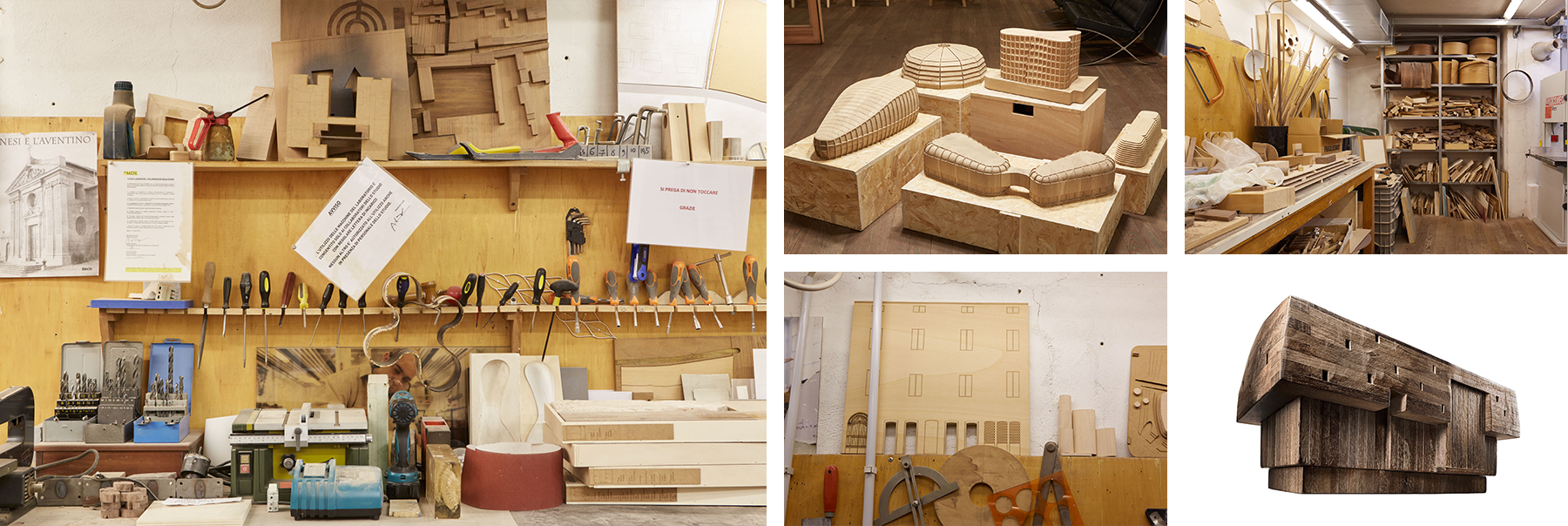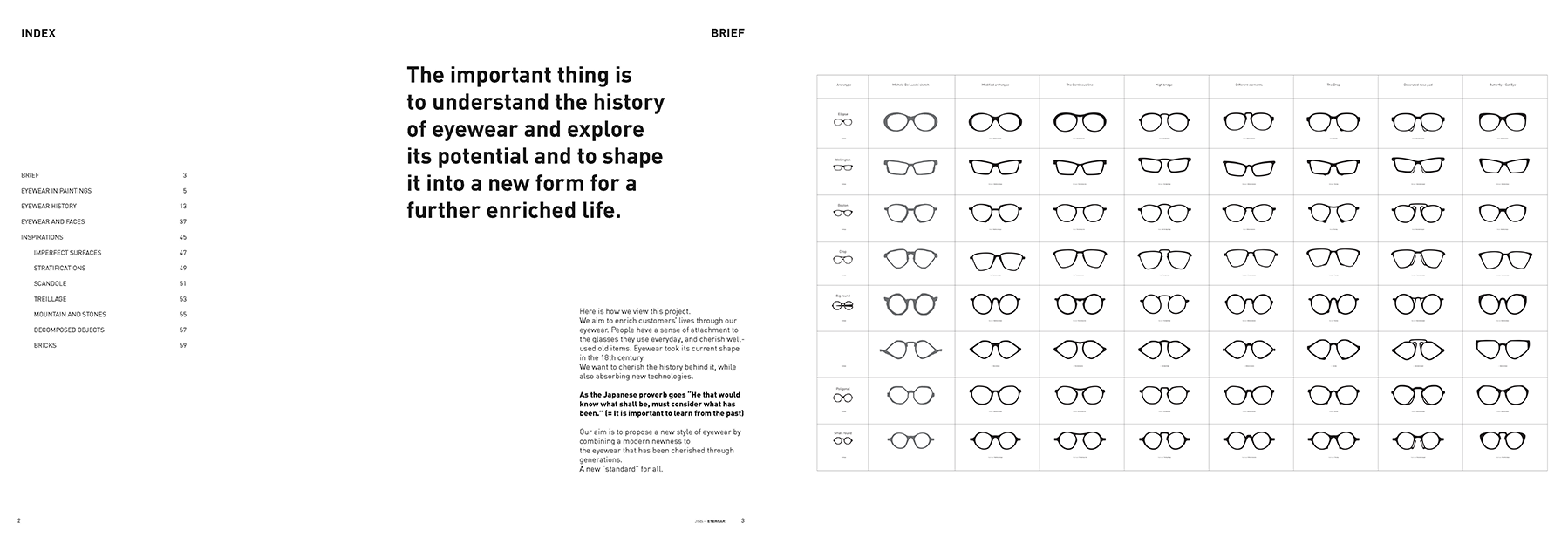“Eyeglasses of today” from the perspective of an architect.
As an architect, I design architectural structures as well as space, furniture and lighting fixtures. I’ve also designed bridges and jewelry, but designing eyeglasses is a different matter. It is indeed exciting to be able to design eyeglasses, a product that is a part of our daily lives. The experience has enlightened me to the fact that eyeglasses are a product made up of a number of parts.
When one refers to eyeglasses, it normally means the entire product, but it is composed of a number of parts, including the front, rims, bridge, nose pads, hinges, temples and so on. In this regard, the same could be said of a building that has doors, windows, roof, façade, etc. Therefore, this project was carried out with the same idea of integrating many different parts.
I particularly focused on the fact that “eyeglasses are worn directly on the face.” Each of us has our own individual face. Although changes will appear with age, we are destined to have this face as long as we live, and that is a wonderful thing. Whether to wear eyeglasses or not and, if so, what type one chooses to wear are decisions that are most personal and profound. In taking part in the design for this project, I realized that it is vital to remember what effect eyeglasses can have on an individual.
Then, there are various factors one must take into account when determining a design. There are the technical details, the aesthetics and the contemporariness. The role of architects and designers is to pursue the image of the times with respect to the people who are living in the era. I contemplated what kind of eyeglasses, in terms of form and detail, should be designed right now.































